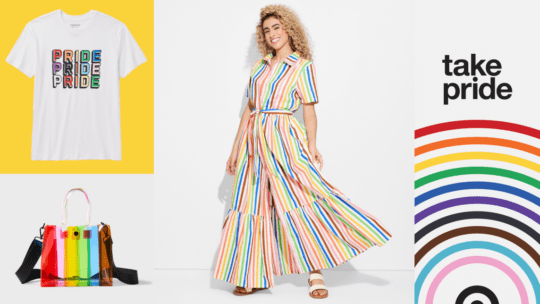
In recent years, Pride month campaigns have received more scrutiny amongst younger generations as activism and visibility have increased. For Pride campaigns to deliver a return on investment, in terms of financials and brand credibility, these campaigns must be made for Queer people, by Queer people and in defense of Queer people.
For example, Target recently attracted national attention—again—for its subdued 2024 Pride campaign, as the store announced an offer of Pride merchandise only in specific store locations. If Target’s intention with these sales is to send a message of inclusion without exception, this is a huge (and avoidable) loss.
June’s dedication to Queer liberation was born from great struggle, profound loss and generational activism. For this reason, corporate campaigns have to be so much more than rainbow-colored logos, and the intention of these initiatives needs to be lasting.
An LGBTQ+ Seat at the Table
As brands begin the initial iterations of June Pride campaigns, it is most important that they assess their creative and communications teams. If these messages are to be focused on a commitment to Queer representation, Queer people need to be part of the process.
Data shows that LGBTQ+ people are dramatically underrepresented in boardrooms: The Association of LGBTQ+ Corporate Directors estimates that just 0.6% of all board seats of publicly-listed companies are LGBTQIA-occupied. This displays a disconnect between public messaging and direct representation. It is difficult to develop an authentic and actionable campaign tailored to a specific audience without a member of that audience being at the table.
Highlight Internal Commitments
Another way to highlight actionable support for Queer communities is to make hard internal commitments to LGBTQ+ inclusion and retention. A company’s reputation begins with its ability to claim a quality work environment for its employees. During Pride month this could be making public statements underlining commitments to protect LGBTQ+ staff, creating spaces of inclusion without exception and promising to make decisions grounded in the liberation of the marginalized. It could also be uplifting Queer employees in marketing materials, and with their permission, celebrating their story and how it speaks to the brand’s inclusionary commitments.
Don’t Waiver
Brands can mitigate backlash by standing their ground. In recent years, brands such as Target and Bud Light reversed inclusive campaigns in regards to negative economic and far-right political reactions to their Pride campaigns.
Politics aside, brands disseminating large-scale communications and marketing plans should be prepared to defend the campaign that many spent hours developing. Backpedaling not only diminishes the trust and authority of brand identity, but it sends a clear message to the LGBTQ+ communities; Pride is intended for inclusion, but only until it meets criticism.
Beyond Sales
While Pride campaigns can deliver pretty large financial results, it has to be about more than just sales. Back up messaging and PR efforts with tangible investments to organizations working to create safer spaces for LGBTQ+ people. The Rainbow PUSH Coalition in Chicago, TRANScending Barriers in Atlanta, ProjectQ in Los Angeles and others are groups working on Trans-healthcare accessibility, LGBTQ+ youth programs and housing services.
It’s important to connect these financial investments with a brand’s identity. Brands can choose a beneficiary located near headquarters or one connected to its founding origins.
And maybe the most important caveat: Do not make these financial contributions dependent on sales. The only message these conditional donations send is that generosity is limited by how many clients or consumers can contribute.
Pride’s Financial Impact
Companies hesitating to participate in Pride campaigns should know there is a lot more on the line than just political backlash. The purchasing power of the LGBTQ+ community is expansive. Global projections value it around $3.9 trillion. The consumer has never been more informed than they are today, with the continued expansion of information exchange.
Brands have taken great losses in recent years for their inaction, or for compromising initial commitments to diversity, equity and inclusion. But they shouldn’t just be afraid to lose market value—they should be worried about disappointing a community that has displayed lasting resilience in the face of systematic oppression.
If a brand plans to profit off of Pride month, it should first guarantee that its campaigns are developed and delivered from Queer voices, show its committed to LGBTQ+ visibility, and that this is inseparable from a brand’s story.
Nick Fulton is a political media strategist based in Washington, D.C.
